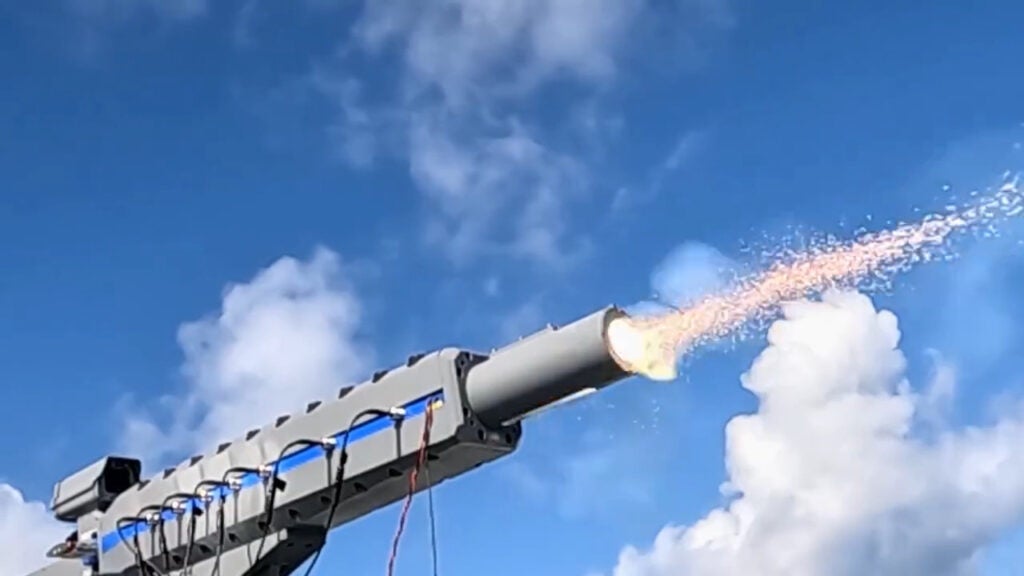Japan Claims World’s First Railgun Test Firing At Sea
Japan’s Acquisition, Technology and Logistics Agency announced on Tuesday that it had conducted its first-ever test firing of an electromagnetic railgun from a Japan Maritime Self-Defense Force ship at sea, the first publicly disclosed test firing of a railgun at sea anywhere in the world.
The Japanese military research and procurement agency uploaded a video of the test in a post on the X social media network announcing the test, which it claimed to be the first ever railgun to be fired at sea. The undated video shows the ship-mounted experimental railgun firing, but the projectile impact is not shown.
The ATLA is pursuing development of ship-mounted railguns to defend against advanced airborne or seaborne threats like hypersonic weapons, with railgun projectiles’ high velocity and deeper magazines theoretically improving their effectiveness compared to conventional interceptor missiles or cannon shells.
While the agency has been conducting research on railguns since the 1990s, efforts were ramped up in 2022, with the fiscal 2022 defense budget proposal allocating 6.5 billion yen (~$56 million at 2022 exchange rates) for railgun research and development. In its fiscal 2024 budget, Japan’s defense ministry proposed another 6.5 billion yen (~$43.4 million) allocation for its railgun project.
Unlike conventional shells that are driven by the detonation of chemical propellants, electromagnetic railguns use an electromagnetic field to launch a projectile at very high speed. The extreme kinetic energy of the projectile on impact is the main means of target destruction.
The United States previously pursued development of railguns for use on ships and ground vehicles. but shelved its main railgun development programs in 2021. At the time, the Navy said its decision was driven by a change in research priorities towards other technologies like directed energy weapons and hypersonic missiles.
In April , ATLA Vice Commissioner Shigenori Mishima told National Defense magazine that Japan was interested in partnering with contractors that had participated in the American programs, with an eye on sharing knowledge to overcome difficulties faced by both nations’ railgun programs in order to deliver a functional railgun.

